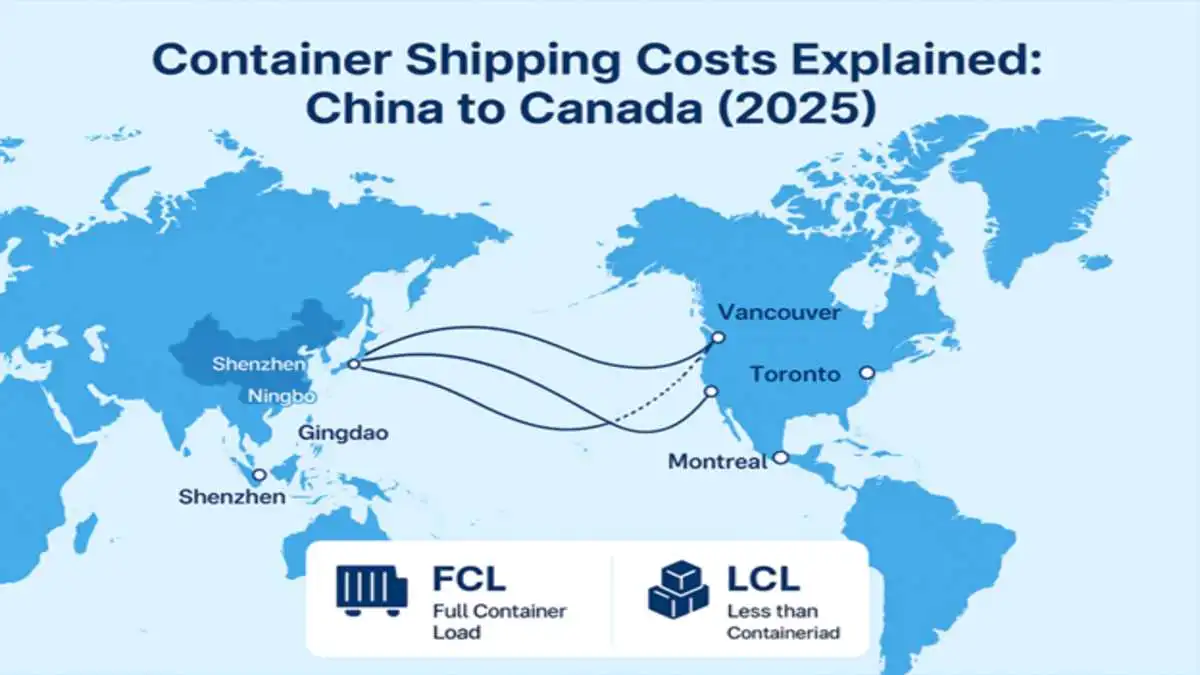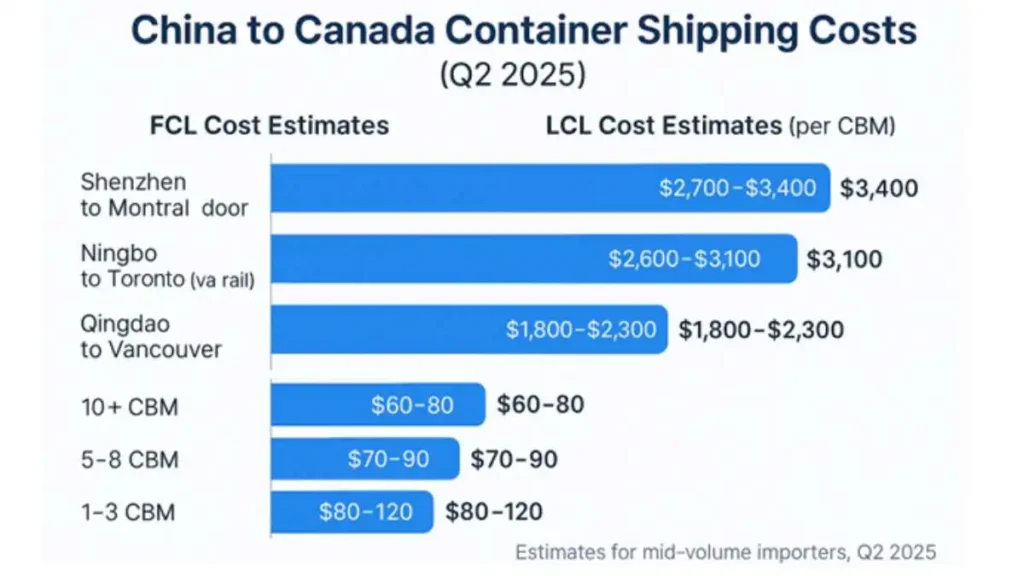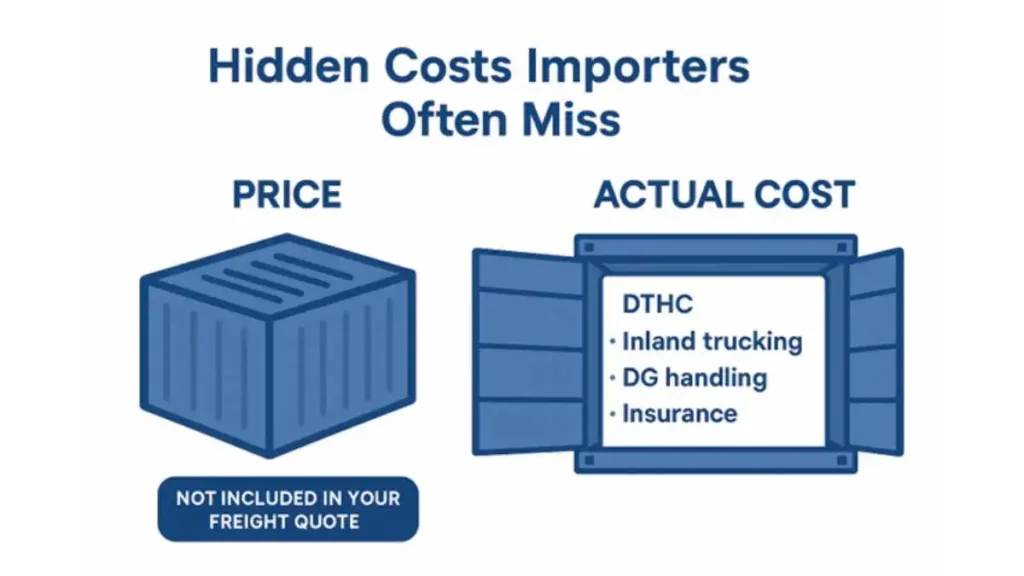GENERAL
Cost to Ship a Container from China to Canada (2025)

What You’ll Really Pay to Ship from China to Canada in 2025
If you’re planning to import goods from China to Canada in 2025, you’re probably asking: “How much will it really cost me to ship?”
The quick answer: it depends — but probably less unpredictably than you think.
Whether you’re an Amazon FBA seller managing landed costs, a procurement lead comparing quotes, or a first-time importer anxious about surprise fees, understanding the full cost breakdown is essential. From freight charges to customs, last-mile delivery, and extra fees you didn’t plan for — this guide walks you through what really matters, with benchmarks, pitfalls, and actionable tips.
Let’s demystify shipping a container from China to Canada — whether you’re moving one pallet or a full 40-foot container, this term refers to the full logistics process for containerized sea freight from China to Canada.
Table of Contents
Ocean Freight Basics: FCL vs. LCL — Which Suits You?
One of your first decisions is whether to ship via FCL (Full Container Load) or LCL (Less than Container Load). Your choice directly impacts both cost and risk.
FCL: Full Container Load
You rent the whole container — 20ft or 40ft — regardless of how much space you use. It’s ideal if:
- Your shipment is above 15 CBM
- You want to avoid mixing cargo with others
- Time and control are priorities
FCL gives you predictability, often faster turnaround, and a better cost per unit at volume.
LCL: Less than Container Load
Your goods share space with others. Perfect for smaller shipments — 1–12 CBM — but comes with:
- Per-CBM pricing ($60–$80/CBM)
- Slower transit from consolidation/deconsolidation
- More handling fees
For newer sellers or testing products, LCL is flexible. But if you’re approaching 12+ CBM, FCL may cost less overall.
Not sure which model fits? Ask your forwarder for quotes on both. GORTO offers both options through their Ocean Freight service, which refers specifically to sea freight from China — covering FCL, LCL, and port-to-door solutions across major Canadian cities.
What Does It Actually Cost to Ship in 2025?
Here’s a look at average rates for shipping from China to Canada, based on recent quotes and GORTO’s client data.
FCL Rates (Estimated Door-to-Door or Port-to-Port)
| Container Type | Origin | Destination | Estimated Cost |
| 20ft FCL | Shenzhen | Vancouver | $1,800–$2,300 |
| 40ft HQ FCL | Ningbo | Toronto (rail) | $2,600–$3,100 |
| 40ft HQ FCL | Qingdao | Montreal | $2,700–$3,400 |

LCL Rates (Estimated Per Cubic Meter)
| Volume | Route | Rate per CBM |
| 1–3 CBM | Shanghai → Toronto | $80–$120 |
| 5–8 CBM | Guangzhou → Vancouver | $70–$90 |
| 10+ CBM | Shenzhen → Montreal | $60–$80 |
These prices usually include freight, handling, and basic clearance — not last-mile unless you’re quoted DDP.
Example Scenarios: What Real Shipments Cost
Case 1 – 40ft HQ FCL (Electronics)
- Origin: Shenzhen → Vancouver
- Freight: $2,850
- DTHC + clearance: $400
- Local trucking: $300
Total: $3,550 USD
Case 2 – 6.2 CBM LCL (FBA Accessories)
- Yiwu → Toronto (Amazon FBA)
- Base freight: $380
- Handling & DDP delivery: $450
Total: $830 USD
Case 3 – 20ft FCL (Battery-Powered Tools)
- Ningbo → Montreal
- Freight: $2,050 + DG surcharge: $180
- Docs & clearance: $400
Total: $2,630 USD
Tip: Watch out for peak season surcharges (Aug–Oct) and fees for hazardous cargo like batteries.
Hidden Costs Importers Often Miss
Many importers mistakenly believe the freight quote is the whole price. Here’s what’s often missing:
- DTHC (Port Fees): $200–$400 (FCL), $30–$60/CBM (LCL)
- Customs & Docs: $50–$200+
- Inland Trucking: $150–$500+ depending on location
- Insurance: 0.3%–0.5% of cargo value
- Special Cargo Handling: $80–$300+ for batteries, magnets, liquids
Always ask for all-in quotes or work with providers like GORTO who help uncover hidden fees early.

5 Smart Ways to Reduce Your Shipping Cost
- Ship Smart Volumes: Avoid the “dead zone” around 12–15 CBM — where LCL becomes inefficient.
- Book Off-Peak: Avoid August–October and post-CNY rush. Booking outside these windows can save 10–25%.
- Explore Routing Options: Xiamen, Tianjin, or Qingdao may be cheaper or faster than Shanghai for certain lanes.
- Use One Provider for All Services: Bundling freight, clearance, and final delivery cuts complexity and often cost.
- Do a Pre-Shipping Audit: Avoid rework costs from incorrect packaging, HS codes, or DG misclassification.
What Documents Do You Need to Ship Smoothly?
Freight planning isn’t just about getting quotes — it’s also about being prepared with the right paperwork. Missing or incorrect documents are among the most common reasons for customs delays, port holds, and unexpected charges.
Here are the essential documents you’ll need for a smooth China-to-Canada shipment:
- Commercial Invoice — A clear description of goods, quantity, unit price, and total value
- Packing List — Including box dimensions, weight, SKU or product code if applicable
- Bill of Lading (B/L) — Issued by the carrier once your container is loaded
- Import permits (if required) — For items like food, supplements, electronics, or regulated items
- HS Code declaration — To ensure correct duty/tax classification in Canada
- FBA prep documents (if shipping to Amazon) — Including carton labels and delivery appointments
Tip: Double-check that invoice and packing list details match exactly — even small discrepancies can flag customs review.
GORTO’s team assists clients with pre-shipping document checks and offers guidance on how to comply with Canadian customs requirements — especially helpful for new importers handling DDP shipments.
Why Many Importers Choose GORTO
GORTO has been helping businesses ship from China to Canada since 2007. They offer:
- Flexible FCL/LCL ocean freight from all major Chinese ports
- Strong carrier partnerships (COSCO, OOCL, ZIM, EMC)
- Door-to-door DDP, Amazon FBA support, and special cargo expertise
- Help with customs, DG declarations, and milestone tracking
FAQs: Before You Book
How long does it take to ship?
- FCL: ~18–23 days to Vancouver, ~28–35 days to Toronto (via rail)
- LCL: Add 3–5 days for consolidation
Can I ship batteries or electronics?
Yes, but they may be classified as DG (dangerous goods). GORTO can assist with documentation.
What’s the minimum shipment size?
LCL starts at 1 CBM. FCL is ideal from 15 CBM and above.
Who handles customs?
You can — or choose DDP to let GORTO handle it end-to-end.
Final Thoughts: Get the Right Quote, Avoid the Wrong Surprises
Shipping from China to Canada isn’t rocket science — but it’s also not something you want to improvise. The difference between a profitable shipment and a costly one often comes down to knowing where the real expenses lie — and planning for them upfront.
From choosing the right freight model and understanding Incoterms, to preparing the right documents and avoiding peak season spikes, smart importers stay ahead by doing their homework.
If you’re planning your next shipment, use this guide as a checklist. Compare quotes fairly, clarify what’s included, and make sure your provider supports you all the way from pickup to delivery.
-

 GENERAL5 months ago
GENERAL5 months agoChristofle – For Those Who Dream of Family Heirloom Silver
-

 SPORTS7 months ago
SPORTS7 months agoDiscover the World of Football with Streameast: Watch Your Favorite Leagues and Tournaments
-

 GENERAL4 months ago
GENERAL4 months agoUncovering the World of кинокрадко: The Dark Side of Film Piracy
-

 GENERAL1 month ago
GENERAL1 month agoATFBooru: Anime, Gaming, and Subculture Imageboard





























